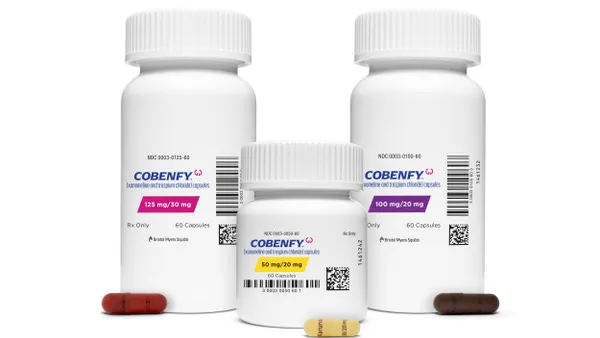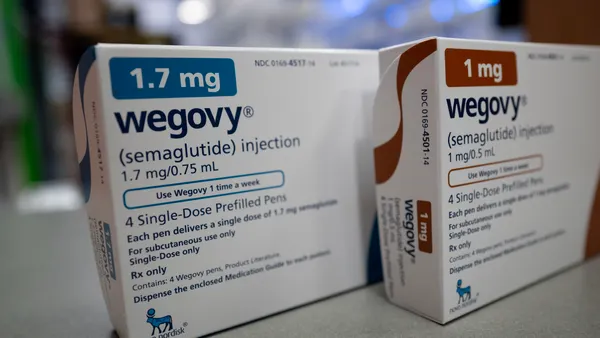Lab data has become an increasingly essential dataset for pharmaceutical companies at all stages of the product life cycle. A key use case for our MMIT clients is using lab data for commercial targeting. Since lab tests often represent one of the earliest data points in a patient’s diagnostic journey, pharma companies are using lab results to identify potential patients and their physicians in time to directly impact the patient’s treatment plan. By coupling lab data with clinical expertise, pharma companies can focus on physicians who recommend and prescribe treatments for applicable patients.
I spoke to Patrick Winniewicz, executive director of Healthcare Analytics Solutions at Quest Diagnostics, about the diverse possibilities for lab data in improving patient access.
Q: Why are more pharma companies using lab data now, and for what purposes?
A: Pharma companies want to get closer to the diagnostic journey, and lab tests and results are so much more expedient than claims data. Lab data has historically functioned as an outside data source, which is now making its way into the mainstream. For years, pharma companies have relied on real-world data from claims and EHR records, but lab data was an add-on source required only for certain scenarios.
In fact, lab data is incredibly useful for clinical trial recruitment and enrollment, clinical protocol development, and recognition of adverse events. Companies are also using lab data for longitudinal tracking. Being able to see the changes in a patient’s levels or result values over time is an indication of disease progression and/or therapy effectiveness. Changes in those biomarkers can provide valuable insight into the effects of a medication on that patient. Some conditions take a good amount of time to progress; they’re not an acute yes or no. Pharma companies can leverage the lab data to understand if a patient is trending towards a disease state, or to determine the advancement of their disease once a diagnosis is already made.
Q: Can you comment on using lab data for physician targeting and the impact of these programs?
A: This is one of the newer and more exciting uses of lab data, as it directly impacts the time to treatment. Pharma companies can almost immediately see if a patient tests positive for a specific biomarker, such as the monoclonal spike for multiple myeloma or the prostate-specific antigen for tumor detection.
The results also get you closer to the decision timeframe for the provider, who will be choosing the appropriate therapy for that patient. The speed of lab data is pivotal here, because the sooner a pharma company knows that a positive lab result has been received, the sooner they can provide education to the treating physician.
Depending on the indication, they can use a value change or the result of a specific diagnostic test to determine if the patient fits their ideal profile. Tracking these tests early on means that pharma companies can talk to physicians about their therapies before the patient is even diagnosed.
Q: What makes Quest stand out from other sources of lab data?
A: At Quest, our clients are predominantly concerned with two factors: what type of tests do we cover, and what percentage of the desired patient population can these tests reveal? Our test compendium covers genetic testing and AP testing in addition to simpler, more traditional lab tests, and we’re also independent from any EMR or health system. When purchasing our tests, they are normalized and immediately available for analysis.
Most importantly, we have a broad geographic distribution, which is representative of the overall U.S. population. We serve more than 50% of the physicians in the country, and we process more than a million samples a day. Because of that footprint, our clients don’t have to work with multiple regional labs; we serve as a one-stop shop for lab testing data.
Lab results on this scale can also surface previously unknown insights for a specific indication, like revealing that patients with a certain variant of a disease have elevated biomarkers.
Q: How can lab data be used in conjunction with other types of real-world data?
A: Depending on the use case, a pharma company would also want to bring in other data sources, such as EMR data or claims data, to get a complete picture of the patient, from their comorbidity history and past diagnoses to procedures, previous therapies, and lab results.
Claims and EMR datasets as a standalone have their own set of limitations, such as the latency of a claims database or the geographical reach of a single EMR. When lab data is linked to claims and EMR data, it can bring together the full picture, and show you the duration between a test and a diagnosis.
Adding in the medication data lets you understand if a therapy is having the anticipated or intended effect by studying changes over time. How long does it take before patients are treated, and what value changes do physicians need to see before the patient is considered for a second or third-line therapy? This can be really useful information to help you understand the typical patient journey and disease progression.
Q: At MMIT, we are seeing the tremendous impact lab data can have on our pharma clients and their patients for all the reasons you’ve described. For example, one pharma company told me our patient profiles helped them start 800 new patients on their therapy, which is amazing.
Having access to lab data allows us to build profiles to identify patients at all points in a treatment journey, from newly diagnosed patients to relapsed refractory patients, and even identify high-risk patients with the use of specific biomarkers. These types of insights allowed the pharma company to educate providers and positively impact the treatment journey.
I know there are countless examples and use cases where lab data has made an impact. What are some of the most successful examples of pharma using lab data that you’ve seen?
A: Two specific stories come to mind. We worked with one pharma company on a treatment for Hepatitis C. Using our geographic spread of data, we identified pockets around the country with lower-than-expected testing rates given the population. The pharma company then created outreach campaigns to providers in those areas, making them aware of the testing disparities and the availability of their therapy, which led to an increase in diagnoses and prescriptions.
The other use case is in Hepatitis D. We used lab data to help a pre-launch pharma company understand the prevalence of the disease, and then to develop a new assay for Hepatitis D testing. They were able to map the patient’s diagnostic journey, and used that mapping to target providers with patients who should be tested, as they were potential candidates for their new therapy.
Ready to identify potential patients and their physicians? Learn more about NorstellaLinQ, which uses predictive analytics to anticipate clinical symptoms triggering earlier diagnosis.










